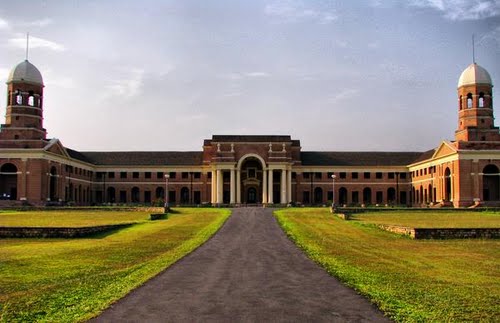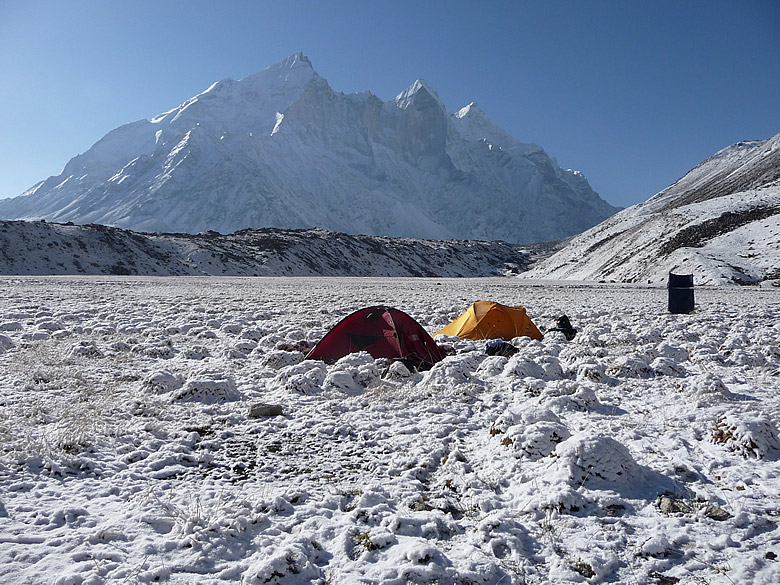Best of India Tours
- Golden Triangle Tour- Best of India & Nepal
- Classical Rajasthan
India Cultural Tours
- Images of North India- Karnataka Heritage
- Rajasthan & Goa Tour
Discover India Tours
- Grand India Tour- North to South India
- Central to South India
Rajasthan Tours
- Classical Rajasthan Tour- Golden Triangle Tour
- Grand Mughal Tour
India Luxury Trains
- Palace on Wheels- The Golden Chariot
- India Deccan Odyssey
- The Indian Maharaja
- Royal Rajasthan on Wheels
Nepal Tours
- Glimpses of Nepal- Buddhist Pilgrimage
- Nepal River Rafting
- Destinations of Nepal
- Nepal General Info
India Wildlife Tours
- North India Wild Life- South India Wildlife
Tibet Tours
- Tibet Monastery Tours- Explore Tibet
- Destinations of Tibet
Spa & Yoga Tours
- Ananda in Himalayas- Yoga & Meditation
Adventure Tours
- Manali Safari Tour- Himalayan Trekking
- Horse Safari
Dehradoon
Dehradoon
![]() Gangotri
Gangotri
![]() Haridwar
Haridwar
![]() Hemkund Sahib
Hemkund Sahib
![]() Kedarnath
Kedarnath
![]() Yamunotri
Yamunotri

Dehradun is situated in the newly formed Himalayan state of Uttaranchal around 235 km from Delhi at the center of the Doon valley. The city has the Himalayas to its north, the Shivalik range to its south, the sacred Ganges to its east and the Yamuna to its west. Dehradun is the part of Garhwal Himalayan region, which was earlier known as Kedar Khand. Katyuris of Garhwal were the initial rulers of this region. Later, this stronghold of the Katyuri dynasty passed into the hands of the Sikhs and Mughals. The Gorkhas of Nepal also ruled here for a long time till the British Dehradoon came into the picture.
Following a war between the Gorkhas and the British, the Treaty of Sugauli was signed in 1816. With this, the British established their hold over the entire Garhwal and Kumaon regions including Dehradun. Today this enchanting city still retains the quaint flavours of the Raj, though the influences of the tourism are gradually turning it into a metropolitan. The people of the city pride themselves for having a smile for all those who come to their lovely city. Dehradun at present is the capital of Uttaranchal and poised for major developments in the coming future.
Sightseeing
This beautiful hill station has several attractions, many of which are academic institutions and research centres of national importance. Forest Research Institute is main centre of research and planning in the fields of flora and fauna in India. Robber’s Cave, situated on the outskirts of the city, is a famous view point. Tapovan is the place where it is believed that Guru Dronacharya (of Mahabharata) had his ashram. Tapkeshwar Temple is dedicated to Lord Shiva and is known for its association with Mahabharata. Dakpatthar is a major tourist attraction opening the visitors to the beauty of Doon Valley.
Excursions
Excursions around Dehradun give you the glimpses of the region’s history, flora and fauna. For the lovers of the wildlife a trip to Rajaji National Park can be quite interesting. The old town of Chakrata gives you an insight into the life of one of the oldest tribes in the region. Kalsi presents the historic past of the city and for all those who want to spend time in the tranquil environs, a trip to the hill station of Mussoorie is not be missed.
Excursions for Dehradoon
Forest Research Institute
On the Kaulagarh Road, northwest of the city center is the Forest Research Institute. Established by the British in 1906, the institute is dedicated to the preservation of India//’s varied and much threatened flora and fauna. Located in extensive grounds covered with myriad species of India//’s forest wealth, it is the biggest forest based product-training institute and the training school for all forest officers in India With the Mussoorie ridge as its backdrop, the institute is home to six museums that are open to the public on weekdays.

The museums have on display some of the best species of flora and fauna to be found in India. They also house wood samples, insects, furniture, wildlife and even few stuffed animals along with a library and bookshop. The institute is one of the best in the world on the science of forestry and covers almost all the aspects related to forests and wildlife in India.
Robber's Cave

Also known as Guchu Pani and situated at a distance of eight kilometres from the city center, Robber’s cave is a beautiful picnic spot. Here you can have a look at one of the nature’s strange phenomena; a stream of water goes underground and reappears a few meters away. The cave is surrounded by hills and is a beautiful getaway for those looking for peace and quiet of the hills. Buses are available up to the nearby Anarwala village from where the caves are only a kilometer away.
Tapovan
Tapovan is a sacred site about five kilometres from the city centre on the Dehradun-Rajpur Road. The place is located in the picturesque Doon valley and according to popular belief Guru Dronacharya, the teacher of warfare to the Kauravas and Pandavas, underwent his penance here.

Tapkeshwar Temple

Situated in the Garhi Cantonment area, 5.5 km from the city centre is the Tapkeshwar Mahadev temple. It is a cave temple on the banks of a seasonal river dedicated to Lord Shiva and is the only significant temple in Dehradun. Beside the river are steps that lead to a cave in which water drips from the ceiling on a shivling. It is after this dripping of water that the temple has got its name //’Tapkeshwar//’. Legends associate this temple with the time of the Mahabharata when, it is believed, Lord Shiva made milk to flow from this cave for Ashwathama, the son of Guru Dronacharya, the teacher of both Kauravas and Pandavas.
Dakpathar
Dakpathar is 45 km away from Dehradun in the western Doon valley. The Yamuna Hydel Scheme, with its lush green lawns and blooming gardens, has become a major tourist attraction in the region. Adding to the grandeur of the place are the vast stretches of the Yamuna and the ragged Shivalik range. Arrangements can be made for a stay in the tourist bungalow there, which commands a beautiful view of the area. There are regular buses from the Parade Ground and Highway Bus Stand, Dehradun to this charming place. Five kilometres ahead of Dakpathar is Kalsi, famous for an Ashokan pillar with inscription in Devanagri on it. This Pillar is preserved by the Archaeological Survey of India. An Ashokan Rock edict, built in 450 BC, is also situated here.

Chakrata

Situated at the distance of 92 kilometres from Dehradun is the 112-year-old town of Chakrata. Its altitude of 7000 m adds to the charm of this haven for nature buffs and trekkers. Covered with lush, dense forest, the area has quaint little villages, inhabited by the Jaunsari tribe. The tribe is said to have descended from the Aryan hordes that had invaded the Indus Valley Civilization. Around Chakrata are several other sites like Mundali, Tiger falls and Lakhamandal that are worth a visit. While Mundali at 9000 m provides excellent opportunities for skiing, the Tiger Falls is the highest fall in the state. Near the fall is the Mahusu Devta temple, which has some beautiful sculptures of the Gupta period. At Lakhamandal or the House of Lac, there are several temples dedicated to Shiva, the Pandavas and Parasuram. However, foreigners are not allowed to enter into the Chakrata region.
Kalsi
Located on the outskirts of the city is Kalsi where you can have a look at a third century rock inscription discovered here in 1860. The rock inscription is the earliest tangible evidence of the history of the city of Dehradun. There are 14 edicts carved on a rock and adjacent to these is the site where Raja Shilvarma of the Vrisheri dynasty made three horse sacrifices during his rule in the third century BC. At the site, large inscribed bricks are arranged in the shape of a bird with a fire altar in the middle.

Mussoorie

The single major attraction for tourists visiting Dehradun is a trip to Mussoorie, which is only 34 kilometres away. Situated at an altitude of 2000 m, Mussoorie used to be a popular getaway during the time of the British rule and till today it has retained its attraction. Getting to Mussoorie from Dehradun is quite convenient as there are buses, taxis and other modes of transport available round the clock that take a maximum of 90 minutes to reach there. It has almost become a tradition for all those visiting Dehradun to also make a trip to Mussoorie.
came into the picture. Following a war between the Gorkhas and the British, the Treaty of Sugauli was signed in 1816. With this, the British established their hold over the entire Garhwal and Kumaon regions including Dehradun. Today this enchanting city still retains the quaint flavours of the Raj, though the influences of the tourism are gradually turning it into a metropolitan. The people of the city pride themselves for having a smile for all those who come to their lovely city. Dehradun at present is the capital of Uttaranchal and poised for major developments in the coming future.
Rajaji National Park
Rajaji National Park is situated at a distance of 23 kilometres from Dehradun. This densely forested sanctuary is known for its elephants, barking deer, leopards, sambar and peafowl and a variety of birds The forest around this region contained 3 sanctuaries, Rajaji, Motichur and Chilla. In 1983, these three parks were merged into one and named Rajaji National Park, after the great freedom fighter C. Rajagopalachari. Spread over 830 kilometres on the foothills of the Shivalik range, the park is known for its elephant population. The park is also home to the forest tribe of Gujjars who have lived in these forests for over 200 years. Rajaji is a magnificent ecosystem at the beginning of the vast Indo–Gangetic plains and has the vegetation of several zones and forest types. It is home to as many as 23 species of mammals and 315 species of birds.

Fact File
 Area: 37.17 sq. km
Area: 37.17 sq. km
 Population:270,159
Population:270,159
 Altitude: 695 metres
Altitude: 695 metres
 Languages: Hindi and English
Languages: Hindi and English
 Best Time to Visit: November-December and April-July
Best Time to Visit: November-December and April-July
 STD Code: 0135
STD Code: 0135




